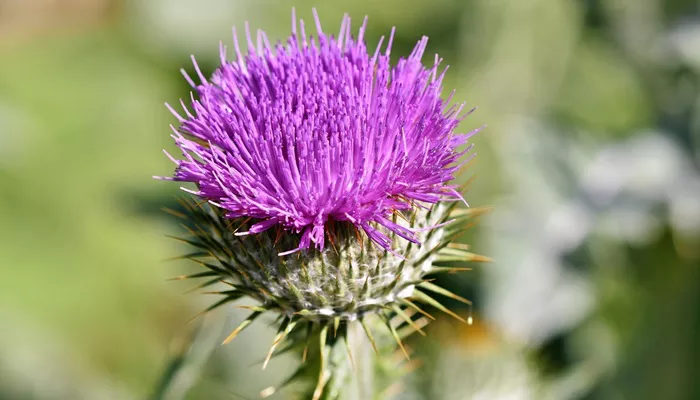Northeastern Wyoming has been engulfed by wildfires over recent weeks, scorching nearly half a million acres in both Wyoming and Montana. While state firefighters have made progress in containing the flames, the threat of new fires looms as summer continues.
As of August 13, data from the National Integrated Drought Information System indicates that over half of Wyoming is experiencing abnormally dry to severe drought conditions, creating an ideal environment for wildfires to spread rapidly.
Once the fires are finally extinguished, the land will need time to recover. However, this recovery period poses a significant risk to the state’s native plants. The Wyoming Weed and Pest Council (WWPC) warns that this is when invasive species are most likely to take hold.
“Often, entire fields of native plants are destroyed by the fire,” said Lindsay Wheat, supervisor of the Albany County Weed and Pest District. “These plants need time to naturally regrow, but stronger invasive weeds often move in and dominate the burned areas.”
One of the most problematic invasive species in Wyoming is Canada thistle, which quickly spreads across burned soil. This weed is considered one of the worst invasive species globally due to its ability to adapt better than native plants. Its extensive root system enables it to outcompete local plant life for soil, water, and sunlight.
“Canada thistle is a ruderal species, meaning it’s one of the first to invade disturbed land,” Wheat explained. “It’s so resilient that it can regrow in burned fields and forests before any other plant, creating major challenges for native species and our state’s livestock.”
Most animals avoid eating Canada thistle due to its prickly nature, which allows the plant to spread further through seeding and pollination. This not only diminishes the natural food sources for livestock and wildlife but also impacts crop yields and hinders farmers’ productivity.
To combat the spread of invasive plants like Canada thistle, the WWPC often collaborates with the Wyoming State Forestry Division to assess wildfire damage and identify the potential threats invasive species pose to native plant growth.
“When a fire ravages an area, we’re often called in to help eradicate the noxious weeds that quickly move in,” Wheat said. “This is just one example of how state agencies work together to keep Wyoming wild and beautiful.”
The WWPC’s preferred method for eliminating Canada thistle is spraying affected areas with herbicide. The University of Wyoming also recommends thoroughly cleaning boots and equipment after leaving an area with thistles to prevent the spread of seeds. Isolated weeds should be removed with a hoe or shovel before they can reproduce.
Prevention remains the most effective way to stop the spread of noxious weeds that hinder native species. If you spot unusual weeds on your property or require chemical intervention to remove invasive species, contact your local weed and pest district for assistance. A list of district offices is available at wyoweed.org.
Practicing fire safety is another crucial step in protecting Wyoming’s wilderness. Properly disposing of litter, avoiding fire-related activities during dry conditions, and fully extinguishing campfires can help prevent future wildfires.
“Drought conditions have been a regular challenge since the early 2000s,” said Erika Edmiston, Supervisor of the Teton County Weed and Pest District. “This year isn’t much different, so it’s important to stay aware of your surroundings and be mindful of potential forest fires. Maintaining healthy populations of native plants is vital for the well-being of our wildlife, livestock, and Wyoming as a whole.”


